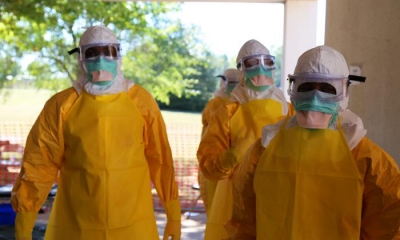UT Austin Harnesses Power of Biology in Partnership with Army Research Laboratory
Early last year, Jimmy Gollihar was deep into building a unique facility on the Forty Acres, what he calls "the biological foundry" – a turbo-charged, biotech playground with a focus on rapid scientific discovery. The foundry was to be a key element of a partnership in synthetic biology research between The University of Texas at Austin and the U.S. military. Then, as fate would have it, COVID-19 would change everything.





















 The waning number of Ebola cases is good news for West Africa, but for those developing a vaccine for the disease, it means time is running short.
The waning number of Ebola cases is good news for West Africa, but for those developing a vaccine for the disease, it means time is running short.







